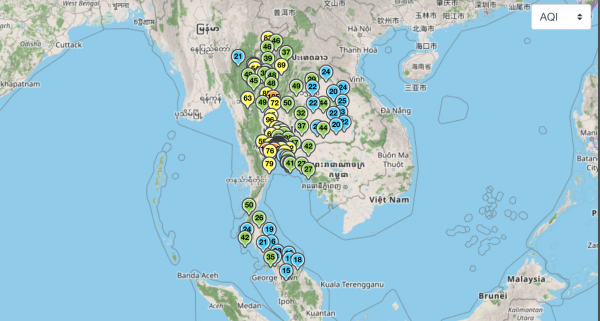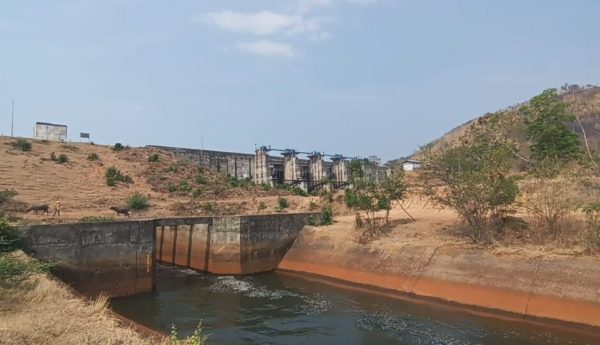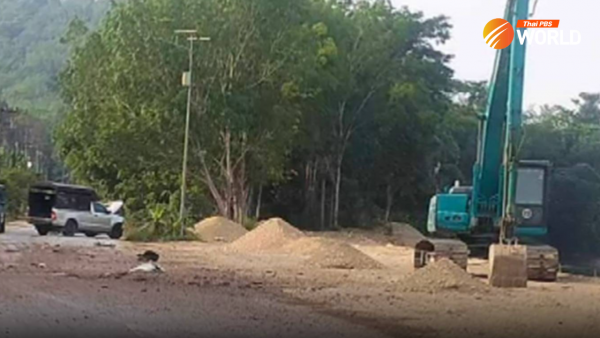Struggling for a breath of fresh air

It’s November and a cool breeze is blowing. While this should be welcomed as it heralds the cool season, instead it signals that burning season is making a comeback and smoke-laden haze that contains fine particulate matter (PM 2.5) is returning. Parts of Thailand are under threat again.
People in many areas are now at risk as poor air quality conditions caused by hazardous haze have started to harm their health.
A news report released this week showed that people in 31 provinces including Samut Sakhon, Nakhon Pathom, Uthai Thani, Suphan Buri, Chai Nat and Bangkok are living in a blanket of smoke. The areas had levels of air pollution way above the unhealthy level.
In Bangkok alone, 34 districts had levels of PM 2.5 exceeding the safety standard, according to an air quality report by the Department of Pollution Control (DPC).
This year, experts and authorities warn that the haze pollution will be worse than last year as a result of the El Nino phenomenon which has led to extreme temperature rises with little rainfall and a prolonged dry spell.
The government, organizations, nonprofits and companies have intensified their efforts to curb the detrimental effects of the air pollution caused by the fine dust through stricter measures, innovation, smart tools, sustainable projects and research studies.
Weapons to battle hazardous haze
In response to the warning, the government has been prompted to address the problems of air pollution in order to secure clean air for all.
Speaking at a seminar last month, Sakda Tridech, head of Air Quality and Noise Innovation, a Sub-Division of the PCD, under the Ministry of Natural Resources and Environment said his department has established a network of air quality monitoring which help monitor the presence of pollutants, allowing authorities to take immediate action to improve air quality and protect people’s health.
Now there are 87 air quality monitoring sites, with another 9 stations to be added soon, he said.
“We also have mobile monitoring and assessment units. They are equipped with a range of necessary tools,” he added.
The PCD has also developed innovative weather-forecasting systems which are able to give accurate predictions for next week. The tool can also predict how the particles travel, he added.
“The forecasting systems help us to prepare for the future. We can convey a message to people who may need to take precautionary steps to avoid the pollution,” Sakda said.
The department has worked with the National Science and Technology Development Agency and the Thai Meteorological Department to process the weather data and uses that information to predict weather conditions and give warnings, he added.
To better battle the fine dust that blights the northern provinces where burning intensifies, Sakda noted, the department has launched the “Burn Check”, a mobile app that helps manage burning and mitigate the problems of wildfires, particulate matter and haze.
According to him, farmers are required to submit a request for burning via the app to authorities for approval before farming residues can be burned. The app provides information on the amount of airborne dust as well as air quality which are used by authorities to consider whether to approve the requests.
The tool allows authorities and villagers to see hotspot data and monitor the fires in real time, he stressed.

To motivate farmers to avoid burning farming waste in their fields, Sakda said the PCD has recently added a new app feature that allows them to sell the crops residues to authorities.
“Stopping the burning of farming waste is a tough task. Forbidden fruit is the sweetest. So, we’ve decided to buy the residues from farmers,” he said, adding that open burning of farm waste is the second main source of air pollution in Bangkok, after vehicle emissions.
In an effort to protect people’s health, Sakda said, the department has lowered the country’s safety standard of PM 2.5 from an average of 50 micrograms per cubic meter to 37.5 micrograms per cubic meter from June 1.
In another move, the Ministry of Industry will implement the Euro 5 emission standard for newly manufactured vehicles, effective from January 1, 2024 to help reduce emissions from road transport, an important factor in improving air quality in the city.
The new regulations are part of the government’s action plan to drive the national agenda “solving the problem of particulate pollution”.
He said the government has worked hard to keep on solving the problems of air pollution particularly particulate pollutants by using pro-active approaches, asking for cooperation from the public, upgrading the protective measures as well as issuing and implementing regulations.
“We have looked into lessons learned for air pollution mitigation policies and measures to make sure that they can solve the problems effectively.” Sakda said.
Adopting sustainable agriculture practice
Pipaksa Thanethawonkun of Kon Gla Kuen Tin, a social enterprise that provides education on sustainable agriculture practice and farming technology, said that the enterprise has been running the “Kon Gla Kuen Tin” (Dare to Return) project. It’s designed to encourage people to return to the countryside and develop smart farming communities using sustainable farming methods and smart technology.
“That will allow them to make a self-sufficient life for themselves through farming. We believe that our project can make a difference to people’s lives and create a sustainable future,” he said.
The project also aims to create a new generation of farmers, he added.
“To us, the new generation is not limited to farmers who are young but rather all people with a sustainability mindset who wish to start a farm using new eco-friendly farming methods. We would like to develop people. Lots of problems including farming, traffic congestion and air pollution are caused by humans.” Pipaksa said.
The traditional farming slash-and-burn technique is blamed for generating haze.
Raising awareness about the impacts of toxic pollutants
Kanadej Thamanoonragsa of FHI 360 noted his organization has worked to spread awareness about climate change, health and the impacts of the pollutants, citing a project in Nepal.
He said the organization has assisted the government of Nepal to improve air quality in Kathmandu Valley. As part of the project, it has created a set of artificial lungs made of air filters to show people how the fine dust affects their health after long-term exposure. The lungs are placed in front of the Ministry of Public Health office. Over time, the white filters turn black
“Some people don’t understand that the PM 2.5 they inhale harms their health because they don’t cause sudden illness or death. They can get deep into the respiratory system and lungs. If we constantly breathe them in over time, they can cause illnesses and disorders. We plan to start the same project in Thailand,” Kanadej said.
In Thailand, the organization has worked with Asian Institute of Technology to conduct a research study on the impacts of PM 2.5 on humans and with United Nations Population Fund (UNFPA) to carry out a survey to determine the vulnerability in the Thai public health system and preparedness for climate change. It has teamed up with state agencies to provide policy recommendations and sustainable solutions to the air pollution problems.
Furthermore, the organization has worked hand in hand with its partners and startups to develop innovative tools to tackle vehicle emissions such as an AI-driven smoke detector.
“The smart device is used to detect hazardous smoke released from the vehicles. It helps the traffic police reduce the burden of daily manual tasks.” he said.
Thai PBS World Feature Desk






